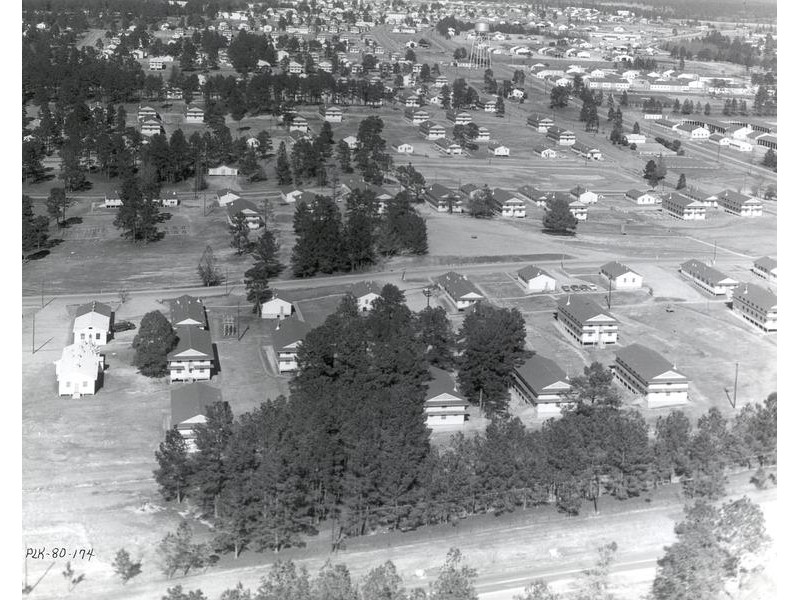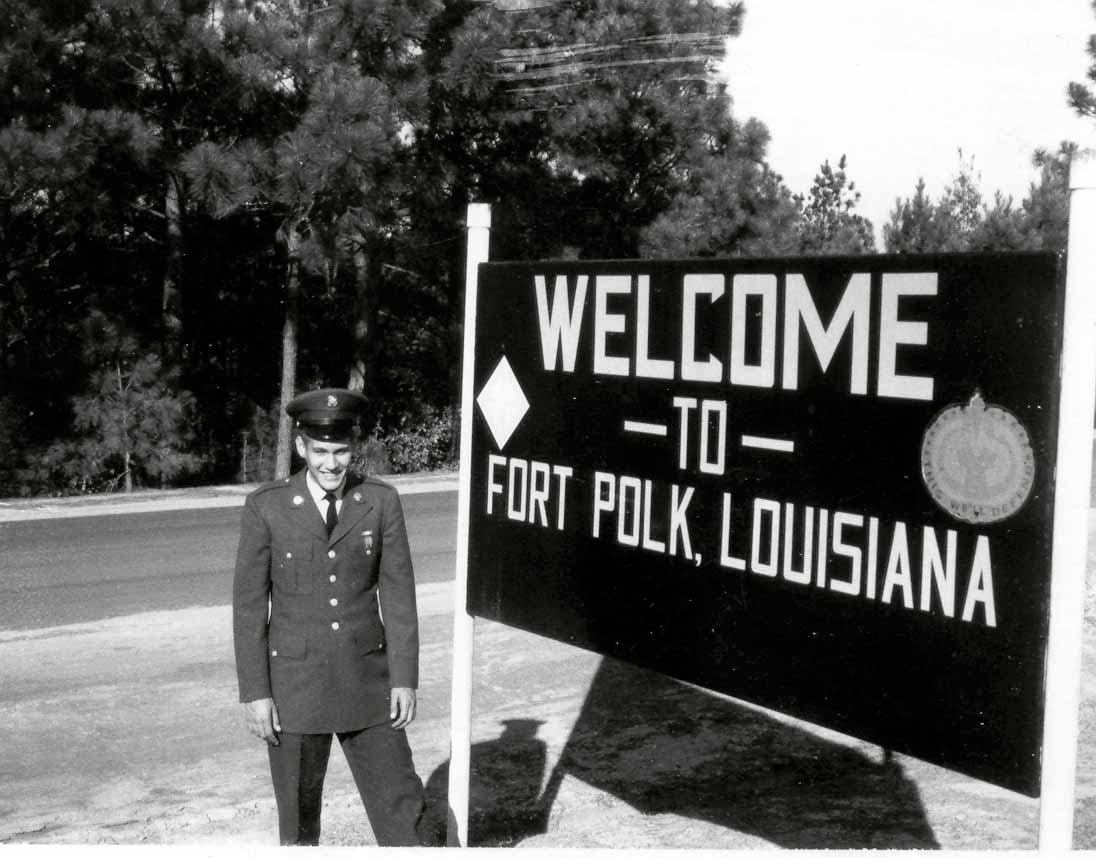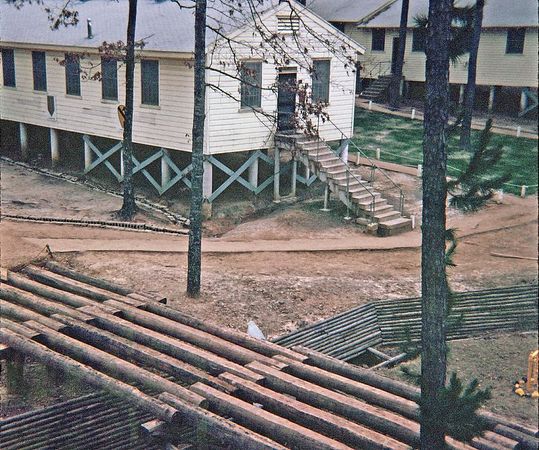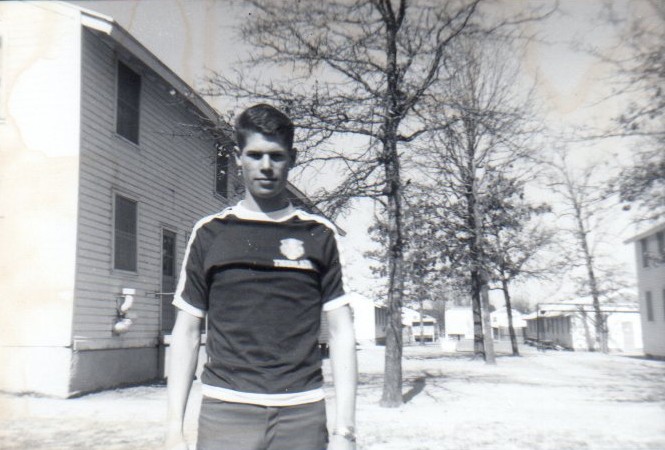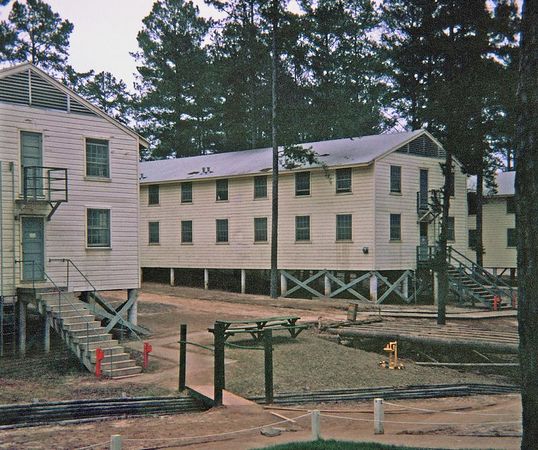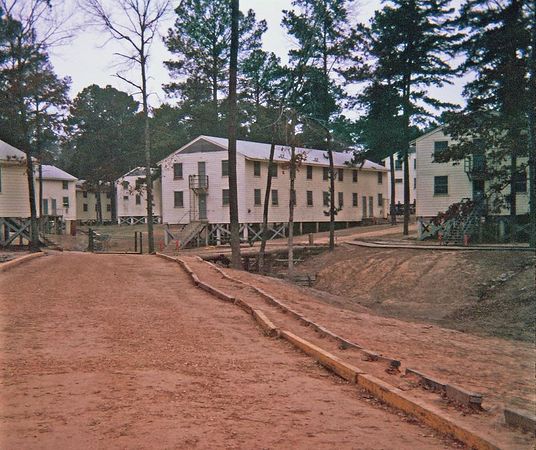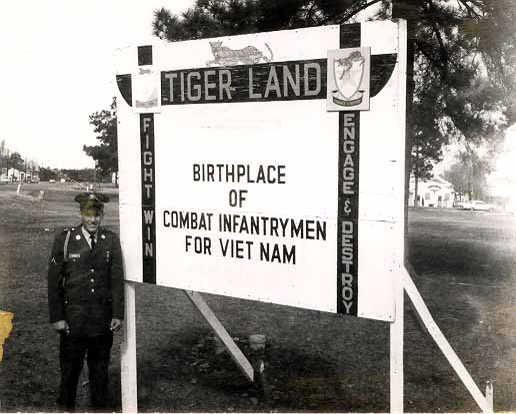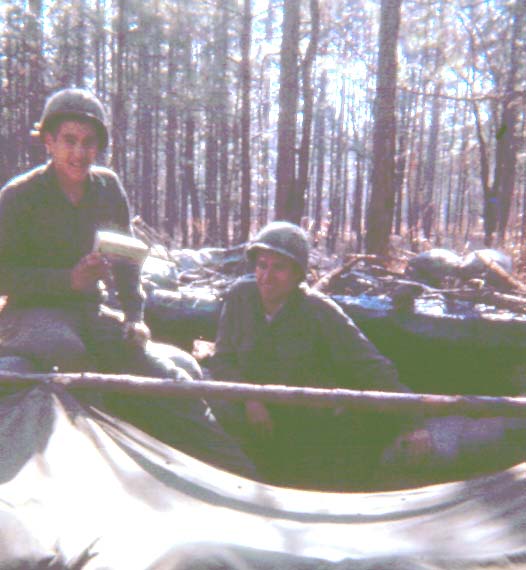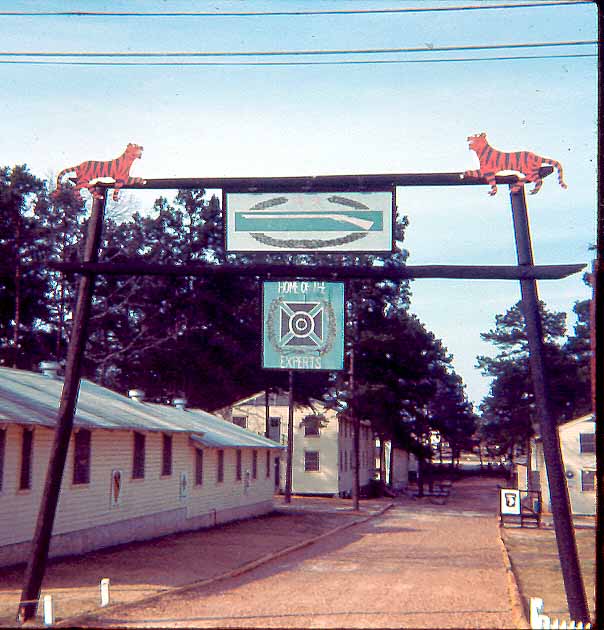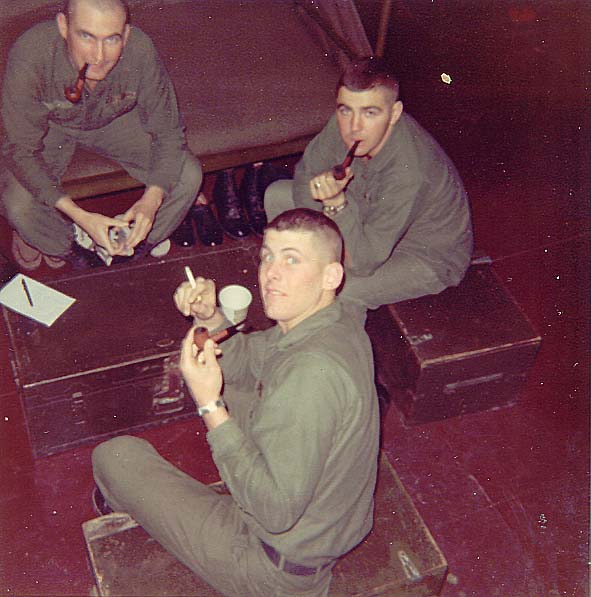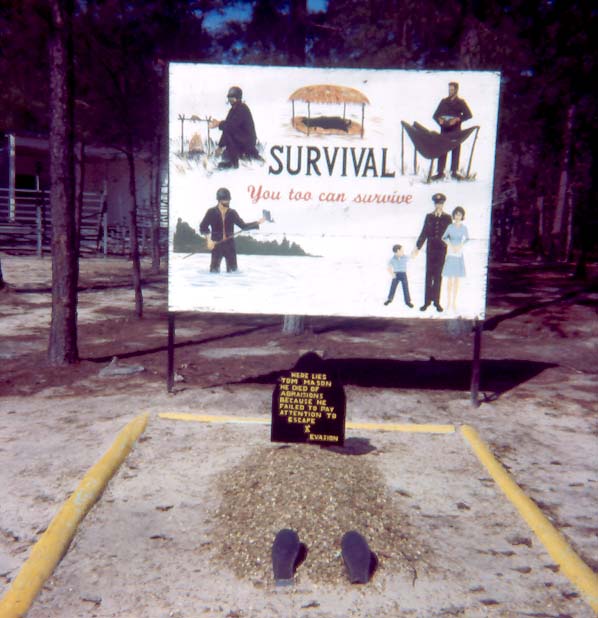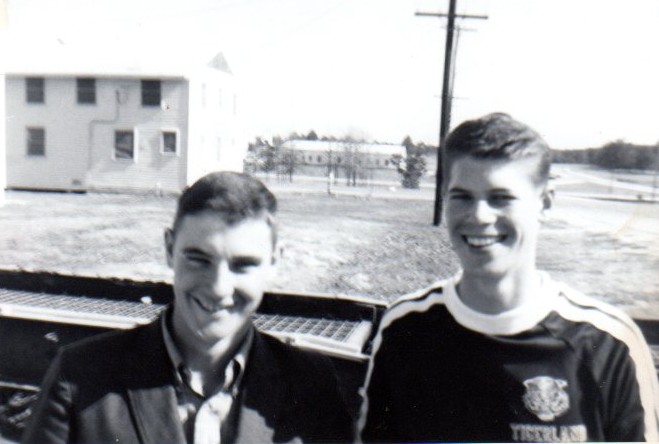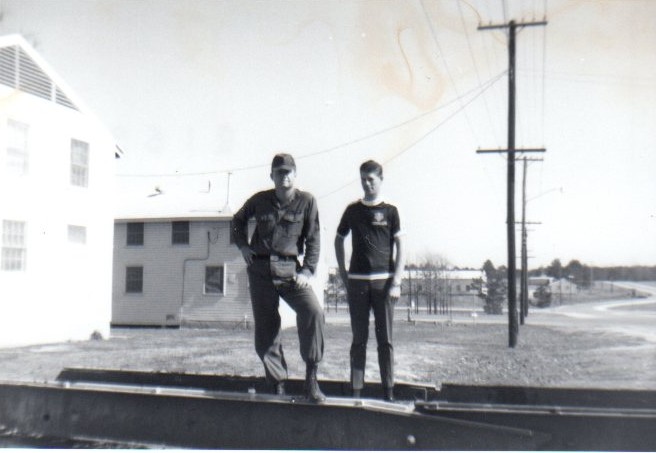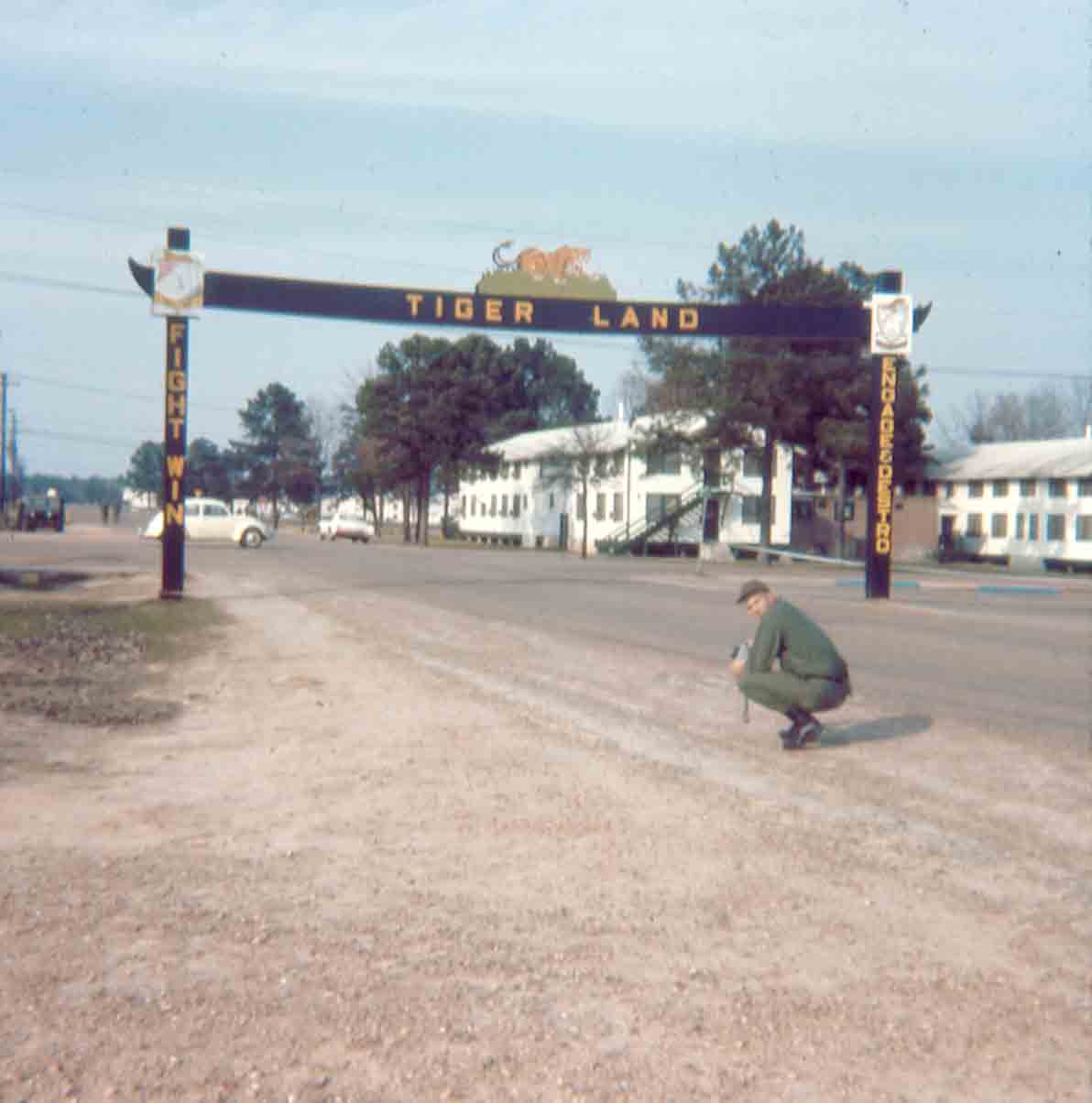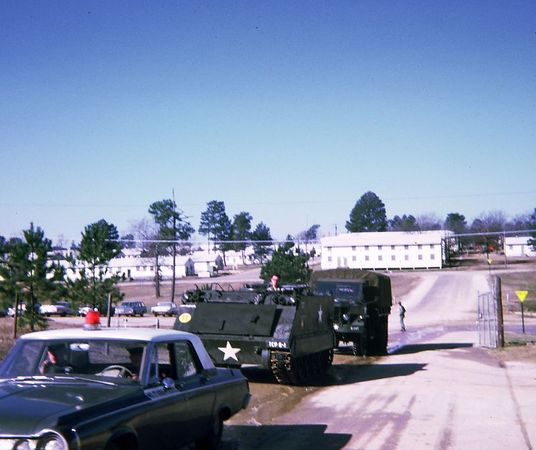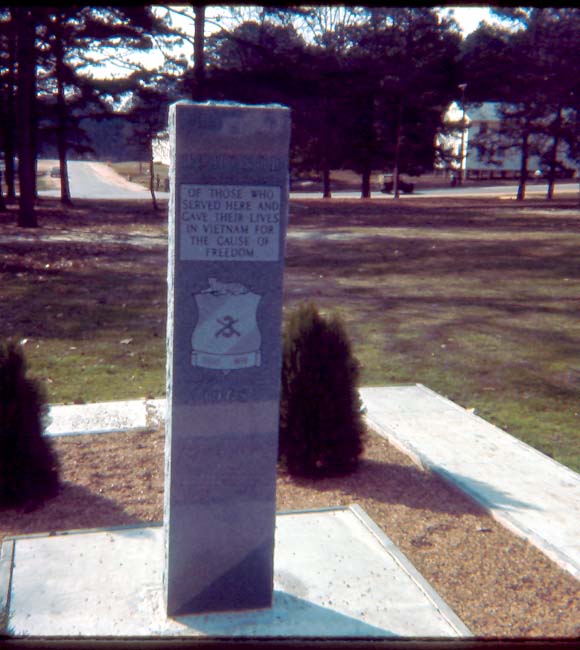

The Vietnam War caused the revamping of many of the army posts around the country. Most of the posts that existed at the start of the war, around 1960-1 were created by the arrival of world war's 1 and 2.. Ft Ord est 1917, Ft Polk est 1941 Ft Hood est 1942, Ft Lewis est 1917, Ft Benning 1918, Ft Carson est 1942 just to name some of the forts that provided for basic and AIT training for infantry.
Many of these posts were referred to as "camps". Meaning their were temporary in nature while forts refers to permanent facilities. The Army also calls posts on foreign soil "camps" and not forts. There is some inconsistency here because we have "camps" where have been in existing for over 60 years.
Everyone who went to Vietnam, Korea or Europe who had a MOS of 11B most likely got some training from one of these posts. For those of us who went to Ft Polk, it was called Tigerland and there was plenty of evidence supporting that propaganda.
I received my basic training in Ft Lewis, WA and my AIT 11B10 training at Ft Polk, LA from November, 1968 until I graduated in February, 1969 from E Co 4th BN 5th Training Bde.
Many of these posts were referred to as "camps". Meaning their were temporary in nature while forts refers to permanent facilities. The Army also calls posts on foreign soil "camps" and not forts. There is some inconsistency here because we have "camps" where have been in existing for over 60 years.
Everyone who went to Vietnam, Korea or Europe who had a MOS of 11B most likely got some training from one of these posts. For those of us who went to Ft Polk, it was called Tigerland and there was plenty of evidence supporting that propaganda.
I received my basic training in Ft Lewis, WA and my AIT 11B10 training at Ft Polk, LA from November, 1968 until I graduated in February, 1969 from E Co 4th BN 5th Training Bde.
Fort Polk is a United States Army installation located in Vernon Parish, approximately 10 miles east of Leesville, Louisiana, and 30 miles north of DeRidder, Louisiana. It was named in honor of the Right Reverend Leonidas Polk, the first Episcopal Bishop of the Diocese of Louisiana, and a distinguished Confederate general in the American Civil War. The post encompasses approximately 198,000 acres. Of this, 100,000 acres are owned by the Department of the Army and 98,125 acres by the U.S. Forest Service, mostly in the Kisatchie National Forest. Fort Polk is the only Combat Training Center that also trains and deploys combat units.
Fort Polk began as a base for the Louisiana Maneuvers in the 1940s. It served the 1st Armored Division in the 1950s, and became a basic training post during Vietnam War years of the 1960s and '70s. It hosted the 5th Infantry Division (Mechanized) in the 1970s-1980s, and the 2nd Armored Cavalry Regiment in the 1990s. Fort Polk is now home to the Joint Readiness Training Center (JRTC), the 4th Brigade, 10th Mountain Division, 115th Combat Support Hospital, 1st Maneuver Enhancement Brigade, the 162nd Infantry Brigade, U.S. Army Garrison and Bayne-Jones Army Community Hospital.
Construction of Camp Polk began in 1941. Thousands of wooden barracks sprang up quickly to support an Army preparing to do battle on the North African, European and Pacific fronts. Soldiers at Polk participated in the Louisiana Maneuvers, which were designed to test U.S. troops preparing for World War II.
Until 1939, the Army had mostly been an infantry force with supporting artillery, engineer, and cavalry units. Few units had been motorized or mechanized. As U.S. involvement in World War II became more likely, the Army recognized the need to modernize the service. But it also needed large-scale maneuvers to test a fast-growing, inexperienced force. That is where Fort Polk and the Louisiana Maneuvers came in.
The Maneuvers involved half a million soldiers in 19 Army Divisions, and took place over 3,400 square miles (8,800 km2) in August and September 1941.
The troops were divided equal armies of two notional countries: Kotmk (Kansas, Oklahoma, Texas, Missouri, Kentucky) and Almat (Arkansas, Louisiana, Mississippi, Alabama, Tennessee). These countries were fighting over navigation rights for the Mississippi River.
The Maneuvers gave Army leadership the chance to test a new doctrine that stressed the need for both mass and mobility. Sixteen armored divisions sprang up during World War II after the lessons learned during the Louisiana Maneuvers were considered. These divisions specialized in moving huge combined-arms mechanized units long distances in combat.
On the defensive front, U.S. doctrine was based on two needs: the ability to defeat Blitzkrieg tactics; and how to deal with large numbers of German tanks attacking relatively narrow areas. As such, the Maneuvers also tested the concept of the tank destroyer.
In this concept, highly mobile guns were held in reserve until friendly forces were attacked by enemy tanks. Then, the tank destroyers would be rapidly deploy to the flanks of the penetration. Tank destroyers employed aggressive, high-speed hit-and-run tactics. The conclusion drawn was that tank destroyer battalions should be raised. Immediately after the war, the battalions were disbanded and the anti-tank role was taken over by the Infantry, Engineer and Armor branches.[3]
German POWs
World War II POW Camp at Fort Polk, LA in 1943
While primarily a training facility, Camp Polk also served as a military prison for Germans captured during World War II. The first prisoners of war (POWs), who began arriving in Louisiana in July 1943, were from the Afrika Korps, Field Marshal Erwin Rommelís troops who fought in North Africa. They were housed in a large fenced-in compound in the area now encompassing Honor Field, Fort Polkís parade ground. Finding themselves captured, transported across the ocean, and imprisoned in the middle of summer was made to hurt their spirits.
The POWs picked cotton, cut rice, and cut lumber. They also helped sandbag the raging Red River in the summer of 1944. Prisoners were not forced to work, and some refused. Those who worked earned scrip for their labor, with which they could buy such necessities as toothpaste or snacks at their own Post Exchange.
From the end of World War II until the early 1960s, the post was closed and reopened numerous times. During much of this time, it was open only in the summers to support reserve component training. Soldiers were stationed there temporarily during the Korean War and the Berlin Crisis.
Vietnam
In 1962, Fort Polk began converting to an infantry training center. A small portion of Fort Polk is filled with dense, jungle-like vegetation, and this helped commanders prepare their units for battle in Southeast Asia. This training area became known as Tigerland. For the next 12 years, more soldiers were shipped to Vietnam from Fort Polk than from any other American training base. On Jan. 23, 1973, Secretary of State Henry Kissingerís negotiated settlement to the hostilities took effect. In October 1974, Fort Polk became the new home of the 5th Infantry Division (Mechanized), and basic training and AIT started being phased out. Fort Polk changed from a Continental Army Command (CONARC) post in July 1975 and became a Forces Command (FORSCOM) member. In the spring of 1976, the Infantry Training Center at Fort Polk closed its doors and ceased operations. The final chapter of the Vietnam War ended for Fort Polk.
Personal Note
I flew into Alexandria Airport from Ft Lewis on a DC-8 landing around 11PM. It was cold but bearable. We were bused over to Leesville and onto Ft Polk. Field jackets were worn daily and when we had to be transported in the cattle wagons, they had to keep the canvas tops on so we wouldn't get frost bite from the biting cold. The first three weeks for me turned into misery when I came down with pneumonia and was sent to the hospital for two weeks. Missing that much training meant that I had to be recycled into another training company. The problem was, I had to kill several weeks before there was one formed and because John Buetler (another hospital victim and I already had the first three weeks of training, we didn't need to repeat that. The Top Sgt for the company decided to send John and myself over to the motor pool and get a military drivers license and we became the company drivers. But it didn't stop there, we continued to drive for the C.O and cadre all the way through AIT. We were required to go through weapons qualifications and the Survival Escape and Evasion Class but we were allowed to miss out on most of the training.
From what I remember, there was a North and South Fort, North for AIT and South where basic training was conducted. A main road connected the two forts together. After the training was over for the day, John and I would drive over to South Fort and get a soda and check out things before we turned our vehicles into the motor pool. The fort was situated in a pine forest with heavy underbrush which duplicated somewhat the terrain and conditions to be found in Vietnam. Everything except for the bitter cold of winter along with the snow flurries and 20 degree morning temperatures
Fort Polk began as a base for the Louisiana Maneuvers in the 1940s. It served the 1st Armored Division in the 1950s, and became a basic training post during Vietnam War years of the 1960s and '70s. It hosted the 5th Infantry Division (Mechanized) in the 1970s-1980s, and the 2nd Armored Cavalry Regiment in the 1990s. Fort Polk is now home to the Joint Readiness Training Center (JRTC), the 4th Brigade, 10th Mountain Division, 115th Combat Support Hospital, 1st Maneuver Enhancement Brigade, the 162nd Infantry Brigade, U.S. Army Garrison and Bayne-Jones Army Community Hospital.
Construction of Camp Polk began in 1941. Thousands of wooden barracks sprang up quickly to support an Army preparing to do battle on the North African, European and Pacific fronts. Soldiers at Polk participated in the Louisiana Maneuvers, which were designed to test U.S. troops preparing for World War II.
Until 1939, the Army had mostly been an infantry force with supporting artillery, engineer, and cavalry units. Few units had been motorized or mechanized. As U.S. involvement in World War II became more likely, the Army recognized the need to modernize the service. But it also needed large-scale maneuvers to test a fast-growing, inexperienced force. That is where Fort Polk and the Louisiana Maneuvers came in.
The Maneuvers involved half a million soldiers in 19 Army Divisions, and took place over 3,400 square miles (8,800 km2) in August and September 1941.
The troops were divided equal armies of two notional countries: Kotmk (Kansas, Oklahoma, Texas, Missouri, Kentucky) and Almat (Arkansas, Louisiana, Mississippi, Alabama, Tennessee). These countries were fighting over navigation rights for the Mississippi River.
The Maneuvers gave Army leadership the chance to test a new doctrine that stressed the need for both mass and mobility. Sixteen armored divisions sprang up during World War II after the lessons learned during the Louisiana Maneuvers were considered. These divisions specialized in moving huge combined-arms mechanized units long distances in combat.
On the defensive front, U.S. doctrine was based on two needs: the ability to defeat Blitzkrieg tactics; and how to deal with large numbers of German tanks attacking relatively narrow areas. As such, the Maneuvers also tested the concept of the tank destroyer.
In this concept, highly mobile guns were held in reserve until friendly forces were attacked by enemy tanks. Then, the tank destroyers would be rapidly deploy to the flanks of the penetration. Tank destroyers employed aggressive, high-speed hit-and-run tactics. The conclusion drawn was that tank destroyer battalions should be raised. Immediately after the war, the battalions were disbanded and the anti-tank role was taken over by the Infantry, Engineer and Armor branches.[3]
German POWs
World War II POW Camp at Fort Polk, LA in 1943
While primarily a training facility, Camp Polk also served as a military prison for Germans captured during World War II. The first prisoners of war (POWs), who began arriving in Louisiana in July 1943, were from the Afrika Korps, Field Marshal Erwin Rommelís troops who fought in North Africa. They were housed in a large fenced-in compound in the area now encompassing Honor Field, Fort Polkís parade ground. Finding themselves captured, transported across the ocean, and imprisoned in the middle of summer was made to hurt their spirits.
The POWs picked cotton, cut rice, and cut lumber. They also helped sandbag the raging Red River in the summer of 1944. Prisoners were not forced to work, and some refused. Those who worked earned scrip for their labor, with which they could buy such necessities as toothpaste or snacks at their own Post Exchange.
From the end of World War II until the early 1960s, the post was closed and reopened numerous times. During much of this time, it was open only in the summers to support reserve component training. Soldiers were stationed there temporarily during the Korean War and the Berlin Crisis.
Vietnam
In 1962, Fort Polk began converting to an infantry training center. A small portion of Fort Polk is filled with dense, jungle-like vegetation, and this helped commanders prepare their units for battle in Southeast Asia. This training area became known as Tigerland. For the next 12 years, more soldiers were shipped to Vietnam from Fort Polk than from any other American training base. On Jan. 23, 1973, Secretary of State Henry Kissingerís negotiated settlement to the hostilities took effect. In October 1974, Fort Polk became the new home of the 5th Infantry Division (Mechanized), and basic training and AIT started being phased out. Fort Polk changed from a Continental Army Command (CONARC) post in July 1975 and became a Forces Command (FORSCOM) member. In the spring of 1976, the Infantry Training Center at Fort Polk closed its doors and ceased operations. The final chapter of the Vietnam War ended for Fort Polk.
Personal Note
I flew into Alexandria Airport from Ft Lewis on a DC-8 landing around 11PM. It was cold but bearable. We were bused over to Leesville and onto Ft Polk. Field jackets were worn daily and when we had to be transported in the cattle wagons, they had to keep the canvas tops on so we wouldn't get frost bite from the biting cold. The first three weeks for me turned into misery when I came down with pneumonia and was sent to the hospital for two weeks. Missing that much training meant that I had to be recycled into another training company. The problem was, I had to kill several weeks before there was one formed and because John Buetler (another hospital victim and I already had the first three weeks of training, we didn't need to repeat that. The Top Sgt for the company decided to send John and myself over to the motor pool and get a military drivers license and we became the company drivers. But it didn't stop there, we continued to drive for the C.O and cadre all the way through AIT. We were required to go through weapons qualifications and the Survival Escape and Evasion Class but we were allowed to miss out on most of the training.
From what I remember, there was a North and South Fort, North for AIT and South where basic training was conducted. A main road connected the two forts together. After the training was over for the day, John and I would drive over to South Fort and get a soda and check out things before we turned our vehicles into the motor pool. The fort was situated in a pine forest with heavy underbrush which duplicated somewhat the terrain and conditions to be found in Vietnam. Everything except for the bitter cold of winter along with the snow flurries and 20 degree morning temperatures
One item I did not immediately put into my personal effects while I was getting acquainted with army life was a camera. These photos are courtesy of Don Lopez who served with the IMJIN Scouts (A 2/9th) in Korea. He was surprised to be sent there rather than Vietnam somehow. Most of these photos are from his website which he has graciously allowed me to duplicate here. Don was at Ft Polk in 1969. His website is located at
http://www.imjinscout.com/YEARBOOK/YBLopez.html.
There a few photos mixed in here from my meager collection while I was at Ft Polk.- Sarge
http://www.imjinscout.com/YEARBOOK/YBLopez.html.
There a few photos mixed in here from my meager collection while I was at Ft Polk.- Sarge
Camp Polk - circa 1941

